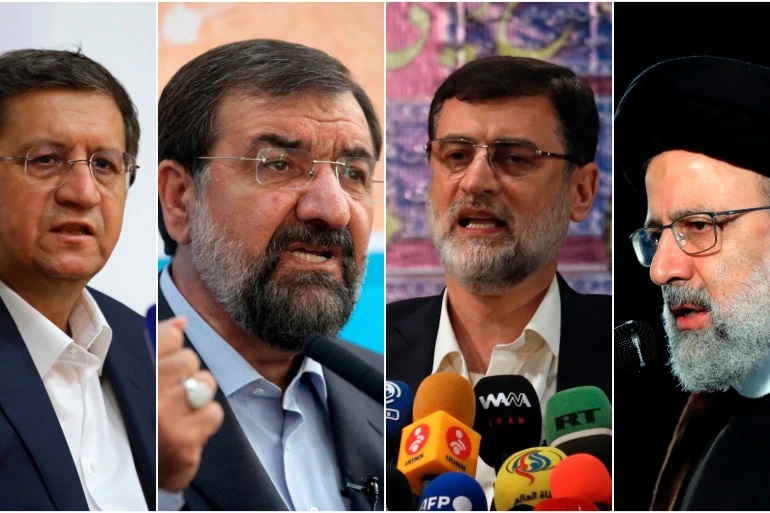
TEHRAN: Iran’s presidential election Friday will determine who will lead the country’s civilian government as tensions remain high between the Islamic Republic and the West over its tattered nuclear deal with world powers.
WHO IS RUNNING?
Among the four candidates, judiciary chief Ebrahim Raisi appears to be the front-runner based on early poll indicators. Abdolnasser Hemmati, the former head of Iran’s Central Bank, appears to be representing moderates in the race. Also running are Mohsen Rezaei, a former Revolutionary Guard commander; and Amir Hossein Ghazizadeh, a current lawmaker. At the country’s three debates, it appeared to instead be a two-man race as candidates largely targeted Hemmati for criticism over being part of the administration of current President Hassan Rouhani until recently.
WHO IS NOT RUNNING?
Rouhani, who is limited from seeking a third four year term in office by the constitution. The Guardian Council, Iran’s constitutional watchdog that approves candidates, also barred a number of prominent candidates from running this year. They included Ali Larijani, a conservative former parliament speaker who in recent years found himself allied with Rouhani. Also barred was former hard-line President Mahmoud Ahmadinejad. He still remains popular for his populist policies while in office despite his antagonism of the West. While Larijani accepted being blocked, Ahmadinejad has urged his supporters not to take part in the vote.
WHAT IS AT STAKE?
Iran’s president oversees the civilian arm of the country’s government. The president sets domestic policy, which is important as Iran has faced years of crushing sanctions from the U.S. after then-President Donald Trump unilaterally withdrew America from the landmark nuclear deal. Those economic problems have seen nationwide protests twice in Rouhani’s time in office. Iran also has faced wave after wave of new cases in the ongoing coronavirus pandemic. The presidency also sets the tone for how Iran interacts with the wider world. However, the winning candidate will be under Iran’s supreme leader, who has final say on all matters of state.
WHAT POWER DOES THE SUPREME LEADER HAVE?
At the heart of Iran’s complex system of governance created after the 1979 Islamic Revolution is the supreme leader. The supreme leader also serves as the supreme commander of armed forces. In turn the supreme leader is himself chosen by an 88-member elected panel called the Assembly of Experts which has the power even to remove one as well. Iran’s current supreme leader, Ayatollah Ali Khamenei, is 82 — leading some analysts to suggest this might be the last election he oversees.
SO IS IRAN A DEMOCRACY?
The referendum held immediately after the revolution voted for an Islamic Republican system. Iran holds regular elections and has elected representatives passing laws and governing on behalf of its people, though the supreme leader acts as the guardian of the system.
Follow this link to join our WhatsApp group: Join Now
Be Part of Quality Journalism |
Quality journalism takes a lot of time, money and hard work to produce and despite all the hardships we still do it. Our reporters and editors are working overtime in Kashmir and beyond to cover what you care about, break big stories, and expose injustices that can change lives. Today more people are reading Kashmir Observer than ever, but only a handful are paying while advertising revenues are falling fast. |
| ACT NOW |
| MONTHLY | Rs 100 | |
| YEARLY | Rs 1000 | |
| LIFETIME | Rs 10000 | |










